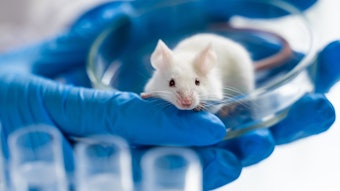During the IFSCC Webinar, “The Science Behind New Cannabinoids Coming to Market,” held online on January 26, 2022, James Baumgartner, Ph.D., of Panacea Life Sciences, steered attendees through the ins and outs of CBD; from regulations and quality considerations, to skin care benefits and current and upcoming cannabinoids. His talk was based on a paper he presented for the Colombian IFSCC in summer 2021.
See related: Cellular Goods Releases Cannabinoid Face Serum
Market and Regulations
Baumgartner started with a big-picture question: “Why are companies excited about getting into CBDs? Big players aren’t in the market yet,” he said, giving a few exceptions, i.e., Burt’s Bees and Lord Jones, among others. “They’re doing their homework. We need to set regulations, clarifications and quality control.”
There are more than 500 compounds in Cannabis sativa L.—it is a great opportunity and will be the richest source of new ingredients and medicines."
According to Baumgartner, the cannabinoid industry “moves at the speed of light, with new advances almost on a quarterly basis.” So, it’s important to understand the regulatory landscape depending on the country or region for which you are formulating.
For example, currently, in the U.S., the allowed THC level is 0.3% to harvest. Internationally, in some regions, cosmetics must not contain more that 0.2% THC, although this will vary. “It’s a mess,” Baumgartner declared, also considering the varied definitions and distinctions between marijuana vs. hemp around the globe.
He discussed the layers of complexity in terms of the FDA’s view of CBD as food, drug or dietary. “Per the FD&C Act, which does not require premarket approval, you’re okay as long as you aren’t adulterating your product. … But watch those claims,” he cautioned.
See related: Inflammatory Conditions Drive Patient Interest in Cannabis
Baumgartner also advised, “If you synthesize delta-THC, be careful. Regulations change and you could be stuck with the inventory by the time you are ready to market.”
During the Q&A session, one attendee asked, “Should this be classified as an OTC drug? Or stay as cosmetic?” Baumgartner responded, “I don’t think they will categorize this as a drug, especially looking at the naturally derived oil from the plant—I sincerely hope it’s not classified as a drug; all that will do is increase the price to consumers for the same effect.”
Another attendee asked about its regulatory status in China. “I have been working with China for last two years,” Baumgartner said. “It’s illegal right now but we thought we had a pathway into China [pre-pandemic],” he explained, noting that path related to detection levels of THC. “Now, the borders are closed. So as of today, there’s not legal pathway into China.”
Quality Sourcing
Why are there concerns about CBD products? “Quality is a huge issue,” Baumgartner stated. “It all starts with great farming. Hemp is a hyper accumulator and will absorb things in its environment,” he explained. “[You have to] look at how a crop is being grown and understand what impurities might be absorbed.”
He furthered emphasized how hyperaccumulation is important with hemp plants, considering pesticides and metals. Some places in China even use hemp crops to remediate spills.
Skin Care Benefits
Clearly, the cosmetics and personal care industry is highly interested in CBD for its potential skin care effects. “In general, the way to think about CBDs is that they are anti-inflammatories,” he said, adding, “what we don’t know is the dosing we need to achieve the effect we observe.”
He continued, “In addition, they have antimicrobial activity. CBD is very effective against MRSA. Also, a recent COVID-19 paper illustrates the effect of specific CBDs (CBDA and CBGA) to be antivirals—but some of the activities shown are counterintuitive or unclear.”
Another reported effect for CBD, for which there have been mixed results, is hair growth. One paper, for example, reported it stimulates hair growth as well as minoxidil. “But it appears that tetrahydro CBD actually has the opposite effect,” Baumgartner said, adding the body is able to react to and bond with treatments beyond CBD based on CB1 and CB2 pharmacology.
“It is difficult to show [specific] mechanisms of action due to the multiple effects,” he said, adding, however, that his company has looked at more than 400 drug targets, and can draw hypotheses based on the different receptors CBDs interact with—which might explain the perceived skin benefits. “Acne efficacy, itch, atopic dermatitis…these are positively affected by CBD and you could take a look at integrating them into personal care.”
See related: Global CBD Skin Care Market to Reach $3.4B by 2026
He gave psoriasis as an example. “Currently, some monoclonal antibodies are being used by pharma to treat it but [we have] explored this mechanism of action with CBD—which selectively inhibited cytokine production at high concentrations. But they need to be dosed systemically and topically for efficacy.”
He added that one patient’s results showed there could be increased sensitivities in different ethnicities. There also may be synergies with multiple cannabinoids and terpenes. Current information focused on skin health has mainly explored CBD and THC, but other cannabinoids—CBDA, CBDV, CBC and CBG—could be relevant.
As an aside, a recent book, Cannabis in Beauty & Drug Preparations, available on Amazon, describes studies of cannabinoids and cannabidiol (CBD), individually and in combination with other cannabinoids, flavonoids and terpenoid synergists, in the treatment of psychological diseases, topical and systemic body ailments. It compiles more than 400 references and provides 100 formulations for topical use that demonstrate how certain cosmetics and pharmaceutical ingredients can synergize the functionality of the formulation.
During the Q&A session, one attendee wondered whether cannabis seed oil has any proven benefits. “Yes, but they are related more to fish oil-type benefits (omegas),” he said.
“What about acne?” one attendee wondered. “We see anti-acne as a claim attributed to CBD. What is that mechanism of action?” Baumgartner pointed to CBD’s antimicrobial activity and ability to fight off infection, as well as its anti-inflammatory effects, as relevant. He added there are hypotheses that CBD can inhibit or reduce sebum production.
Another attendee asked if CBD could be added to lip care, and if there might be odor or color concerns. “Industrial products will smell and taste like oniony and lemony and skunky,” Baumgartner said, “and hemp is industrial. But if you use cannabidiol isolate, effectively it’s an odorless and tasteless powder. If anything, it’s slightly bitter …and there are healing benefits for dry and chapped skin,” he added.
CBD Compounds
Baumgartner also gave attendees a “crash course” in CBD chemistry. “CBG is the mother molecule. THC, CBD and CBC are produced therefrom. THC degrades to CBN, which has poor solubility in water. Cannabigerol (CBG) can be used to create stabler emulsions. Also, no one talks about bioavailability, which is important.”
In terms of new cannabinoids on the market, he points to CBG and CBN. “These act as anti-infectives… Their terpene compounds also need to be considered…We need to explore more targets to find the true differences… including the entourage effect.”
Lastly, Baumgartner said, “How you formulate does make a difference.” He first defined the various types of cannabinoids:
- Full spectrum oil has not been altered and contains a rich mix of cannabinoids, terpenes and flavonoids;
- Broad spectrum oil has THC removed from it and contains other cannabinoids, terpenes and flavonoids;
- Isolate is pure cannabinoid; and
- Crude extract is oil extracted from the plant without further refinement.
He also explained the INCI nomenclature. “Whatever the primary constituent is > 80%, that’s how it’s classified. If there is none present over 80%, it’s Cannabis sativa extract.”
See related: CBD, Microbiome and Personalization Take the Stage at SCC Scientific Meeting
During the Q&A session, one attendee asked how the material’s large molecular weight could penetrate the skin for real efficacy. “If you mix CBD in in olive oil, you get penetration. … We see you get good penetration with oil carriers. … What you don’t see is CBD crossing into the dermis,” said Baumgartner. “You [also] can add a carrier like menthol as a dermal driver.”
Another attendee wondered about the stability of CBD. “CBD itself is pretty stable,” said Baumgartner. “Avoiding sunlight, we have had had topical formulas stable for up to three years. When you are working other molecules, [though], you have to do studies.” Baumgartner recommended using an oil base, or if a water base is preferred, creating phospholipids to encapsulate it, to create stable emulsions.
Key Take-aways
Overall, Baumgartner summarized some key considerations of cannabinoids for formulators:
- Pay attention to their antimicrobial activity; they demonstrate efficacy against Gram positive bacteria while not causing resistance. One note—CBD does not work against Gram negative bacteria if the membrane is intact.
- They are better at preventing tartar and tooth decay better than anything we have now.
- CBG inhibits quorum sensing and is useful for soaps in hospitals.
- Recent publications show CBDA and CBGA target the spike protein of COVID-19 and block its entry into cells—although it has to be present at high levels and its bioavailability must be understood. CBD also has been shown to inhibit the replication of COVID-19 in the body.
- Future implications for personal care could be to inactivate COVID-19 before it contacts the body. Full spectrum options might improve activity.
“There are more than 500 compounds in Cannabis sativa L.—it is a great opportunity and will be the richest source of new ingredients and medicines,” said Baumgartner. “We need to understand their benefits, though.”
He concluded that the industry needs to be responsible about the quality of the extracts and conceded that improved regulations, while not desired, are needed.










!['We believe [Byome Derma] will redefine how products are tested, recommended and marketed, moving the industry away from intuition or influence, toward evidence-based personalization.' Pictured: Byome Labs Team](https://img.cosmeticsandtoiletries.com/mindful/allured/workspaces/default/uploads/2025/08/byome-labs-group-photo.AKivj2669s.jpg?auto=format%2Ccompress&crop=focalpoint&fit=crop&fp-x=0.49&fp-y=0.5&fp-z=1&h=191&q=70&w=340)